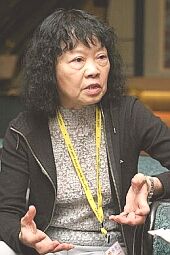|
Ho says in practically every case, transgenic inserts (introduced GM genes)
were found to have rearranged themselves not just from the construct used
but also from their structure in the transgenic line reported by the companies.
(A GMO is created by joining together new combinations of DNA from widely
different sources and deliberately inserting the artificial constructs
into the genomes of the intended organisms.
"I have pressed for ‘event specific’ molecular characterisation
of the structure of the inserts and their position in the genome in successive
generations, as proof that the transgenic line is stable,” adding
that she would suggest five successive generations of observation.
She also pointed out that the promoter widely used by the biotech industry
is highly hazardous. The cauliflower mosaic virus (CaMV) 35S promoter
has a recombination hotspot, resulting in fragmentation and rearrangement
of the transgenic DNA which in turn increases transgenic instability.
The CaMV 35S promoter fulfills the role of a very aggressive promoter
in forcing a foreign gene to express in an organism, but such viral transgenes
in plant could recombine with naturally occurring viruses to generate,
in some cases, super-infectious viruses.
“(In my opinion) the protocol is like a big bad joke on real people.
The inherent risks of GMOs are so huge that talking about compliance and
liability is almost an absurdity and surreal,” she says in reference
to the on-going meeting of the CPB that is deliberating on biosafety standards
to be adopted in response to the emergence of GMOs.
The CPB is intended to be an international legal framework designed to
deal with the specific hazards of genetic engineering recognised by the
international community through the Convention on Biological Diversity.
“There are outstanding safety concerns regarding GM crops which
have yet to be addressed. Drastic things can happen. In Mexico, for example,
strains of GM crops are contaminating local maize varieties, raising concern
that it may destabilise the genome of these conventional maize even when
there is no known cultivation of GM crops there,” she adds.
Furthermore, she said compliance is not only a tricky issue but is also
unjust.
“Developing countries have no capacity for monitoring compliance.
In any case, why should they pay for this mess? They didn’t create
these monsters. Irresponsible scientists from developed countries created
this so the responsibility should lie on industrialised nations to clean
up the mess,” she says, adding that scientists should be conscious
of their role in society.
Developing counties made up the majority of the parties to the CPB, while
GMO-exporting countries like the United States and Canada have stayed
out and are actively lobbying behind the scene to weaken the standards.
She says the priority of the scientific research community is misplaced
and a revitalisation of indigenous knowledge that promotes conservation
of biodiversity and development of sustainable alternative is the much
needed paradigm shift for the future of mankind.
Dr Ho, a senior research fellow at the Open University in England, specialises
in human biochemical genetics and is a well-known figure in the debate
on genetic engineering and biosafety.
|









